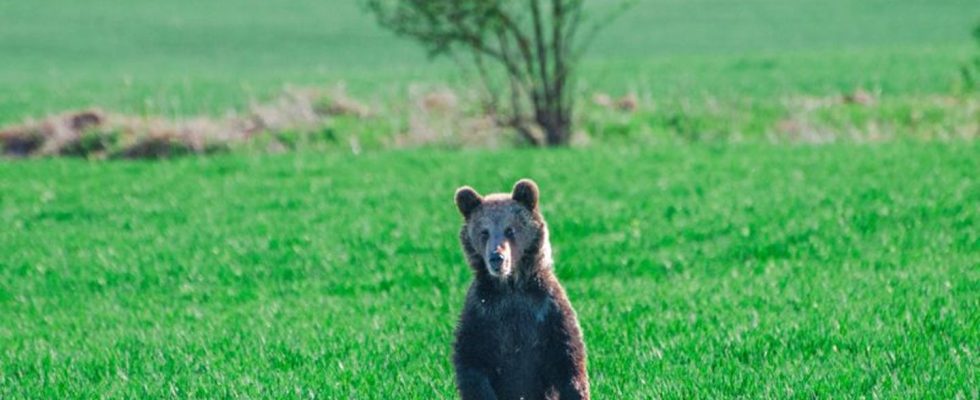Animals
Bears are increasingly spreading fear in Slovakia
In recent weeks, several people have been injured in involuntary encounters with brown bears in Slovakia. photo
© Jaroslav Slastan/State Nature Conservation of Slovakia/dpa
Hikers and mushroom hunters injured by brown bears make headlines in Slovakia. An expert explains why such incidents are increasing and how you can protect yourself.
In the event of collisions with brown bears, In Slovakia, more than a dozen people were injured, some seriously, within a few weeks in March and April. Not only hikers, mushroom hunters and forestry workers in the dense forest were affected, but also five pedestrians within an urban residential area in mid-March.
At that time, a brown bear was running through the urban area of the small town of Liptovsky Mikulas (old German name: Saint Nicholas in the Liptau) and attacking passers-by. Now the calls from residents and politicians for targeted shooting of the fundamentally protected animals are becoming louder.
Conflicts between bears and humans have increased
Jaroslav Slastan confirms to the German Press Agency that conflicts between bears and humans have increased. Slastan should know, because he heads one of the five regional groups of the “Brown Bear Operations Team”, which is part of the state nature conservation organization SOPSR. The team is alerted if there is an impending danger from bears or if people or pets have already been injured. Slastan and his colleagues are primarily on the move for prevention and education purposes. But if something has already happened, they investigate the causes and, in extreme cases, coordinate the killing of “problem bears”.
Slastan explains that incidents occur particularly frequently around the beginning of spring because this is the time when female bears take out their cubs that were born in winter. To protect them, they can also attack. Their irritability is further increased by the phenomenon of so-called infanticide. Wandering male bears kill foreign cubs in order to then mate with their mother and spread their own genes. Female bears occasionally seek proximity to human dwellings with their cubs because they hope that the males will stay away. However, this increases the risk of surprising encounters with people.
Targeted reduction is inevitable
The advance of bears into inhabited areas also has to do with local overpopulation and the associated displacement, says Slastan. That is why he also believes that targeted reductions in such areas are unavoidable.
The phenomenon of “container bears” raiding trash cans in residential areas has been reduced in Slovakia through preventive measures. However, the food supply from orchards or small farm animals such as rabbits or chickens remains tempting for the omnivores. Slastan’s response team also observed cases in which forest officials made illegal extra income by intentionally placing food near human settlements to attract bears as an attraction for photographers.
Precautionary measures in the forest
The most common injuries to people occur when they carelessly enter the bears’ natural environment. The state nature conservation agency therefore put an educational film online in 2023 entitled “How to behave in the forest”. According to Slastan, the most important rules sound simple: avoid densely overgrown areas away from marked paths, draw attention to yourself by audibly speaking, singing or making other noises and thus enable the bears to escape in good time. In rain or darkness, bears are less likely to see us.
If you come across a bear despite such avoidance strategies, Slastan advises not to run away, but to move away slowly. Screaming loudly or throwing objects at the animals is more likely to irritate them than scare them away. According to Slastan, it is a misconception that bears allow themselves to be “distracted” by throwing food at us: “The animal does not attack us because it is hungry, but because it feels threatened.”

